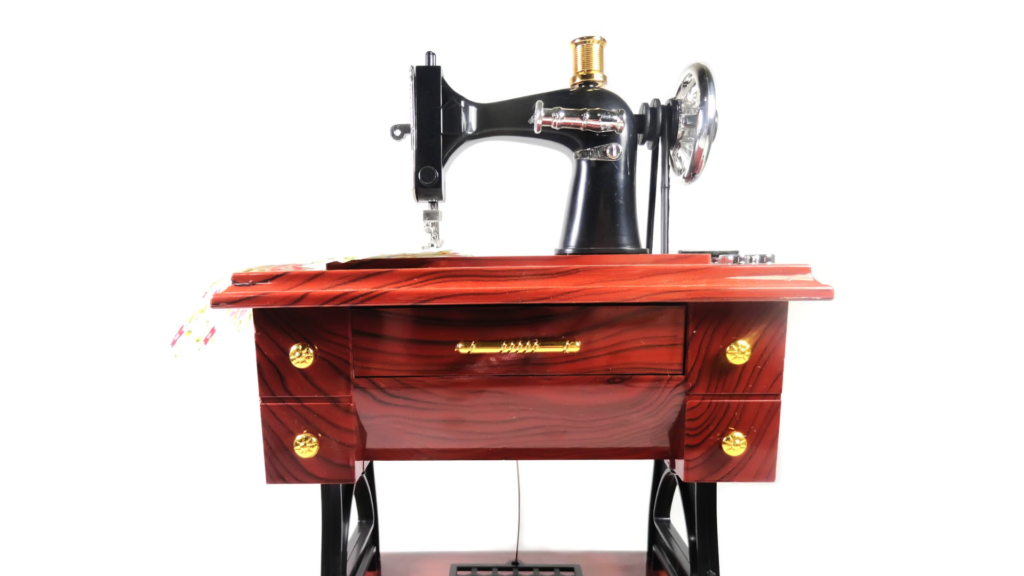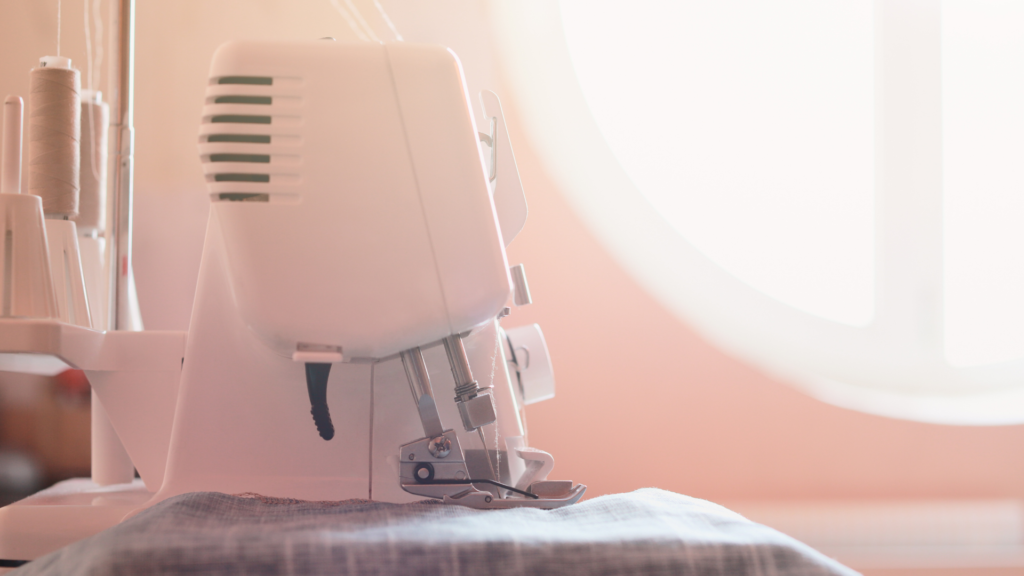Sewing Machine Continues to Sew Foot Controller
Last Updated on October 13, 2021
When working with fabrics, some people may prefer using a sewing machine. Among the most crucial parts of working with a sewing machine is the foot pedal as this mechanical part is key to being able to sew efficiently and accurately when using a sewing machine.
The sewing machine foot pedal lets you control your sewing machine's speed. Because of this, it is considered among the most critical parts to keep in check and maintain.
To fully grasp control of a sewing machine, learning about the foot pedal mechanism is a good starting point. So, here is a comprehensive guide about what you need to know about sewing machines to help you work more efficiently.
How Sewing Machine Foot Pedal Works
As stated before, the foot pedal is a part of the sewing machine that gives you control of the entire mechanism. It helps you maintain and control the speed and power the machine is putting out.
Foot pedals are essential since this is one of the very few parts of a sewing machine that helps you control its power and speed. Aside from that, it also lets you focus on guiding the fabric you're working on.
The mechanism for the foot pedal isn't hard to understand. Basically, the more you press down on the pedal, the faster the sewing machine works. It means, the less you apply pressure on the pedal, the slower the machine goes.
The foot pedal works with this mechanism as well as with the smooth functioning of its accessory parts. There are a lot of different sewing machines available in the market that can be quite overwhelming to the average consumer. However, every sewing machine has the same basic function and operation.
Also, if you take time to inspect a foot pedal, you may see a cord with connectors at the end. These cords have to be appropriately fitted to ensure a smooth operation of the sewing machine.
Below is how a sewing machine pedal works:
- Most left pedals of different brands and models of sewing machines are the same. It primarily engages the clutch and controls the speed of the machine as a whole. Also, it is vital to note that these functions rely on how much pressure is applied to the pedal.
- The right pedal of the sewing machine disengages the clutch and engages the brake to stop the sewing machine. Additionally, the right pedal is the one that sends high-pressure air through the control valve to be able to open the presser foot of the machine.
- The pedal mechanism is derived from the pivot motion of your control arm with a pivot pin at the center. This control arm will be activated with the help of different rotations of the two-foot pedals. It can be done either in a counterclockwise or clockwise manner.
- Once the pivot-motion control arm rotates clockwise, the brake will engage, and your sewing machine will, in effect, stop working. Conversely, once the pivot rotates counterclockwise, the machine will speed up with the pressure of your foot, determining how fast the machine will work.
Parts That Makes Sewing Machine Foot Pedal Work
If you have a sewing machine, chances are you're already familiar with how a foot pedal works. As explained above, the foot pedal mechanism works with a simple treadle mechanism.
A few notable parts of a foot pedal allow it to work as well as it does. Some of these components, as well as their functions, are as follows:
The Footrest Of Foot Pedal
Having a footrest is not a bad idea if you want to have some comfort while you work. This part helps you keep your feet close to the mechanism and the ground to help you get around at will.
A footrest on your foot pedal can help you be as stationary as possible to avoid straining your feet while working. Also, it is possible to make your own makeshift footrest if your workplace doesn't have one. You can do so by using a mat, and placing it below your pedals does the trick quite nicely.
Rheostat of The Foot Pedal
This sewing machine component is an essential part of the machinations of the foot pedal. This part is in charge of changing the resistance to regulate and control the flow of current across the sewing machine.
This part is capable of significantly changing the output of the motor of your machine. Essentially, it helps the motor to run either fast or slow.
If you experience jerks while working with the machine, it may be a good idea to check the rheostat. This part uses two graphite tracks of resistor plate to ensure that the machine runs as smoothly as possible.
Once you apply pressure on the foot pedal, the metal wedge will press down on the resistor plates that will create compression in the rheostat. The more these plates get compressed, the lesser resistance the rheostat will have. This conversion results in you being able to run the machine faster the more you apply pressure on the pedal.
The Capacitor of The Foot Pedal
The capacitor, also called the condenser, is the part that helps store electricity and also acts as a battery for the machine. If you ever experience malfunctions with your sewing machine, you may need to change the capacitor to fix the problem. If you experience a shutdown or a power outage, the capacitor can keep the machine up and running. It is due to the electricity it has stored.
Mechanical Parts of The Foot Pedal
For many models, all mechanical parts of the foot pedal are made of plastic joints. This way, you can expect to see the upside-down movement fully. Maintenance of these parts should also not be neglected since they are essential to ensure the machine's functionality. A few drops of lubricant on the joints should keep everything nice and smooth.
Connector Of The Foot Pedal
It is important to ensure that all the mechanical parts and the rheostat stay connected to the sewing motor. These connectors help to transmit energy to keep the pedals connected and the machine running and working. Make sure that you use high-quality connectors to avoid accidents and short circuits.
Pedal Assembly
The pedal assembly is one of the notable parts of the foot pedal. This part is connected with a rod to the machine's control arm and is responsible for activating the mechanism.
Additionally, this part helps you control the overall speed of the sewing machine.
The counterclockwise pressure on the assembly is then transmitted to the sewing machine's arm, which controls the machine's speed. Conversely, if you apply pressure clockwise, the pedal assembly will activate an air control valve to open the presser foot.
How Sewing Machine Foot Pedal Benefit Sewing Machines
One obvious benefit of using a foot pedal in your sewing machine can help achieve a quick and efficient sewing experience. In essence, a foot pedal is as useful as a gas pedal is to your car.
Enhances Speed of Work
Having a foot pedal allows you to enhance and polish the speed of your work. The simple yet effective mechanism can increase or decrease the speed at which you work with your fabrics. The more pressure you apply to the machine, the faster the machine will work with you.
Can Run Without Electricity
The capacitors that come with most foot pedals can store electricity that you can use in case of a power shutdown. If you're using a traditional foot pedal, then you will never have to worry about electricity at all.
Relaxation Through Sewing
Using a foot pedal, believe it or not, can also be therapeutic. The machine observably offers a soothing and rhythmic hum whenever you press down on the foot pedal, allowing you to be more easily absorbed in your flow. This rhythm will enable you to be able to relax and contribute to your focus as well.
Control Over Sewing Machine
The most notable benefit of having a foot pedal for your sewing machine can have control over your entire mechanism. You may decide how fast or slow you want to work.
Fixing a Sewing Machine Foot Pedal
Making repairs is the truth of life. At some point in a sewist's life, there will be a time that they have to repair even their favorite items. While most people opt to have a professional do the repairing, you can always choose to do it yourself and save some money.
What's more, when you succeed in repairing your items, it gives you more confidence to keep doing it.

Tips On Fixing Your Sewing Machine Foot Pedal
The inside of your foot pedal should not contain a lot of complicated parts, and fixing it should be easy. The first place you have to check is the power cord.
Make sure that it doesn't have cracks or breaks, and double-check to ensure it isn't frayed or faulty. If it is, then remove the old cord and replace it with a new one.
Keep in mind that fixing an older foot pedal may take a little time since those have very simple pieces of equipment. In any electrical device, make sure you have unplugged your sewing machine from the power source.
Even if you say, the machine is turned off, unplugging the entire mechanism minimizes the possibility of an accident occurring.
Next, check your power cord. If the cord looks burnt, cracked, or has other notable damages, make sure to replace it. This process only requires a few minutes tops.
If the power cord is fine and deemed free of damage, the next thing to look at will be the wires. Make sure the wires are tight.
If they aren't, tighten them, and they should be fine. Some models may require you to remove the circuit board to do that, but it's not as complicated as it sounds.
After checking and ensuring the wires are all okay, the last step is to keep the food pedal clean. Dust and wipe the foot pedal to keep yourself from future frustrations as much as possible.
Do I Need A Sewing Machine Foot Pedal?
You can always choose to use a sewing machine that doesn't have a foot pedal. By proxy, they should have hand or knee pedals. If your machine has a start or stop button, you'll still be, more or less, able to control the speed of the machine.
A sewing machine unit without a foot pedal is more commonly used in smaller-scale projects and orders. After all, using a sewing machine without any automated parts is a time-consuming process that can take up your crucial time and productivity.
It is always advisable for you to get the latest models of foot pedals to use. Often, these models carry easy-to-understand manuals along with outstanding efficiency.
Can My Sewing Machine Use A Sewing Machine Foot Pedal?
One thing to make sure of if you have decided to use a foot pedal is the compatibility of the pedal to your machine. If things go awry, your sewing performance will be drastically affected.
If you are using the latest or more recent sewing machine model, chances are you may be able to interchange the foot pedals. Many sewing machines have the same pedal mechanism, so interchanging them is not that hard at all.

Some Final Words
To summarize, foot pedals offer a great change to your sewing experience by being an efficient and productive partner. So, it is important to know how it works, what it does, and how to keep it in tip-top shape at all times.
Knowing these things will let you reap the benefits of having foot pedals that can help you to improve your experience and possibly even your career.
Happy sewing!
Source: https://www.sewkitkit.com/sewing-machine-foot-pedal/
0 Response to "Sewing Machine Continues to Sew Foot Controller"
Post a Comment